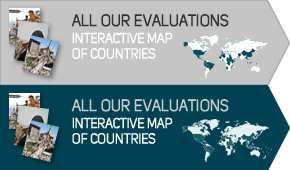Description of project
The TEC evaluation had five parts and four parts concentrated largely on process issues – coordination, need assessment, capacity-building and funding – while the LRRD part looked at outcome issues as well: what were the consequences of successful and unsuccessful linkages between the different stages of recovery?
Already during autumn 2005, when the TEC-LRRD evaluation was carried out as one of the five TEC studies, it was said that a later follow-up would be necessary in order to capture the rehabilitation/reconstruction and development aspects when the interventions had progressed further.
The tsunami disaster along the coasts of the Indian Ocean in December 2004 generated an unprecedented response from the international donor community, individuals and NGOs worldwide and private companies. Massive resources for immediate disaster relief were mobilised very fast and large amounts of money became available for recovery and reconstruction. The governments in the most affected countries mobilised extraordinary resources and in e.g. Indonesia and Sri Lanka special government agencies were created to handle the reconstruction.
The multitude of organisations involved in the aftermath of the tsunami created problems of overview, coordination, follow-up and reporting to relevant receivers of information. At the initiative of OCHA and ALNAP, a number of organisations formed the TEC in order to more effectively and on a joint basis evaluate the tsunami response and the interventions carried out by the various actors.
The objective of the follow-up evaluation was to identify linkages, both positive and negative, between relief, recovery and development activities, investigate results and consequences of these that have taken place during the more than three years after the disaster and formulate lessons to be learned and recommendations from this. The analysis was carried out for learning purposes.
For analysis purposes the evaluation was divided in five themes:
A. The return of the state and civil society
B. Poverty, livelihoods and economic recovery
C. Rebuilding the social fabric and community development
D. Reduction of risks from natural hazards and conflict
E. Capacity development
DARA was in charge of the analysis of 2 of them: The return of the state and civil society and capacity development The evaluation was carried out in three steps, each ending with a separate report. Step one – the documentary study – it continued the work done by the TEC secretariat and the individual evaluation studies, gathering and reviewing all evaluative analyses that have been carried out concerning the tsunami, and specifically the three case study countries. Step two – the field study – which started from the gaps identified in the documentary study and collected information on a qualitative and quantitative basis. Step three (the synthesis report and consultation) was based on the first two steps of the evaluation. It was more than the classical iteration of two or three drafts of the report for final dissemination, accompanied by one or more workshops and presentations. This phase was complemented with a broader civil society consultation, plus a learning process about the evaluation. A specific effort has been made to root the findings in the context of the individual countries, allowing them to take the products of the evaluation forward.

Share this